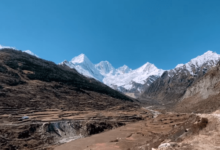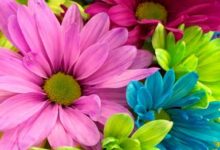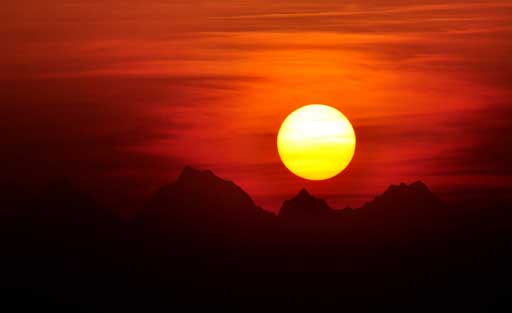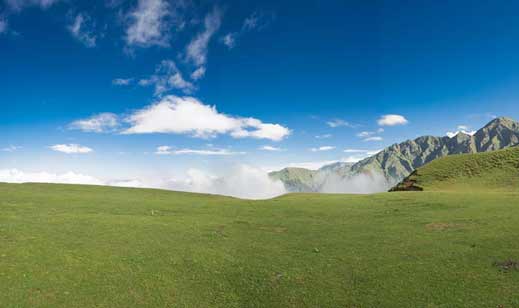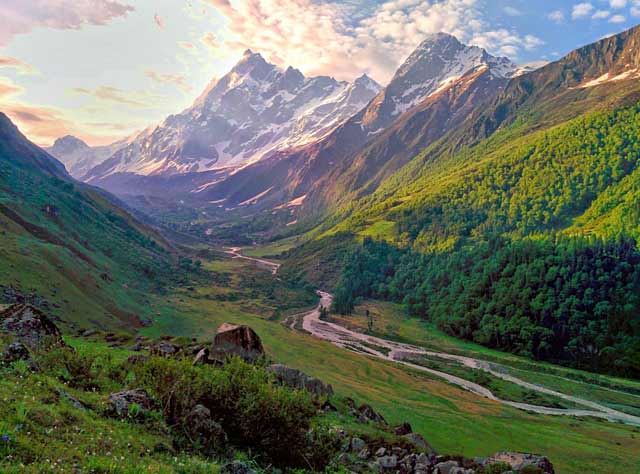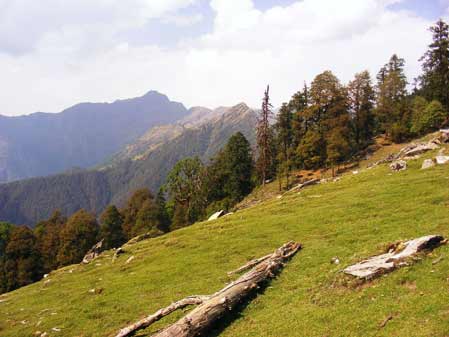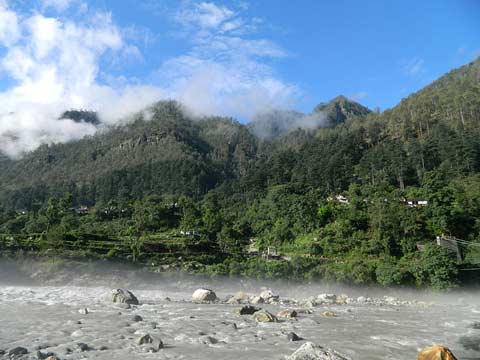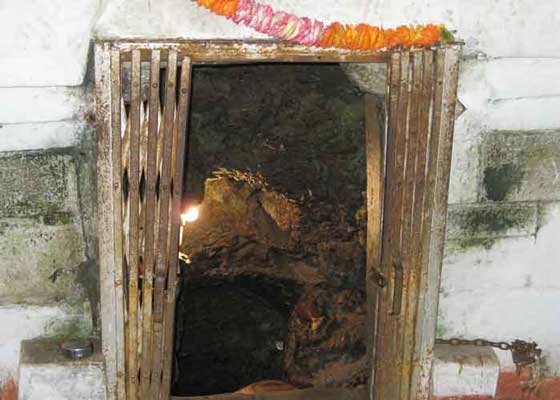Valley of Flowers
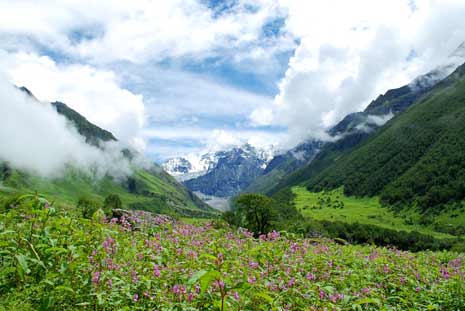
Nestled in the Himalyas is a place so rich in biodiversity that local shepherds refused to take out their cattles for grazing there believing it to be celestial playground of Gods. The Valley of Flowers is situated at an altitude ranging from 3352 to 3658 meters (more than 11000 ft) above sea level in the and is open for only a few months mesmerizing visitors with its wide array of flower species.
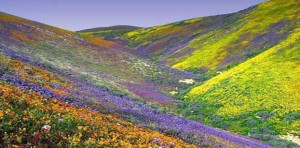 With mother nature painting the landscape with all its hues and colors one could easily be forgiven to think of this place as the Garden of Eden. This richly diverse area is also home to rare and endangered animals, including the Asiatic black bear, snow leopard, musk deer, brown bear, red fox, and blue sheep. Birds found in the park include Himalayan monal pheasant and other high altitude birds.
With mother nature painting the landscape with all its hues and colors one could easily be forgiven to think of this place as the Garden of Eden. This richly diverse area is also home to rare and endangered animals, including the Asiatic black bear, snow leopard, musk deer, brown bear, red fox, and blue sheep. Birds found in the park include Himalayan monal pheasant and other high altitude birds.
The Valley of Flowers is nestled in the upper expanses of Bhyundar Ganga near Joshimath in Gharwal region. The lower reaches of Bhyundar Ganga near Gobindghat are known as Bhyundar Valley. The Pushpawati river rises form the glacial deposits around Rataban and Nilgiri ranges divides the valley into two sections. The major portion of the valley is on the right bank and is a trekkers paradise.
History
The Valley of Flowers was discovered by British botanist and mountaineer Frank S. Smythe in 1931 when they accidently stumbled their way into this enigmatic valley while returning from Mt. Kamet expidition. His book “The Valley of Flowers” lifted the veil of this hidden beauty for the outside world.
An alpine calley formed by retreating glaciers, whose movements through millions of years have shaken the hard rocks beneath, forming a unique U-shaped valley. It houses some of the world’s rarest flora and fauna.
Best Time to Visit: The best time to visit the area is from Mid July to early September.
The Trek
Getting to the Valley of Flowers requires a trek of about 17 km (10.5 mi). The trekking starts at the base camp in Gobindghat (which is the last point for all motorable vehicles) which also serves as a starting point for pilgrims visiting Hemkund Sahib. From Gobindghat, a trek of 14 km (8.6 mi) brings trekkers to the Ghagaria, a small hamlet located about 3 km (about 2 mi) from the valley. The visitors to Valley of Flowers need to get a permit from Forest Department, at Ghagaria and the permit is valid for three days and visiting and trekking is allowed only during day time. As visitors are not allowed to stay inside the National park, accommodation can be obtained at Ghagaria.
Government Tourist houses, Gurudwara guest house and other private lodges offer resting places to the weary trekkers.

